Perfect Your Python Development Setup
Learning Path ⋅ Skills: VS Code, PyCharm, Venv, Pyenv, Docker, Git, GitHub

Optimize your Python development setup! Curate an effective toolkit, use VS Code and PyCharm, manage versions with pyenv, and explore Docker. Get hands-on with virtual environments and Git/GitHub. Elevate your coding experience and workflow seamlessly.
Perfect Your Python Development Setup
Learning Path ⋅ 12 Resources

Tutorial
An Effective Python Environment: Making Yourself at Home
This guide will walk you through the decisions you need to make when customizing your development environment for working with Python.

Tutorial
Your Python Coding Environment on Windows: Setup Guide
With this opinionated guide to setting up a basic, fully featured and flexible setup for Python coding and open source contributing when working from Windows, you'll go from a fresh install to ready to contribute, and even check out a PowerShell script to automate much of the process.
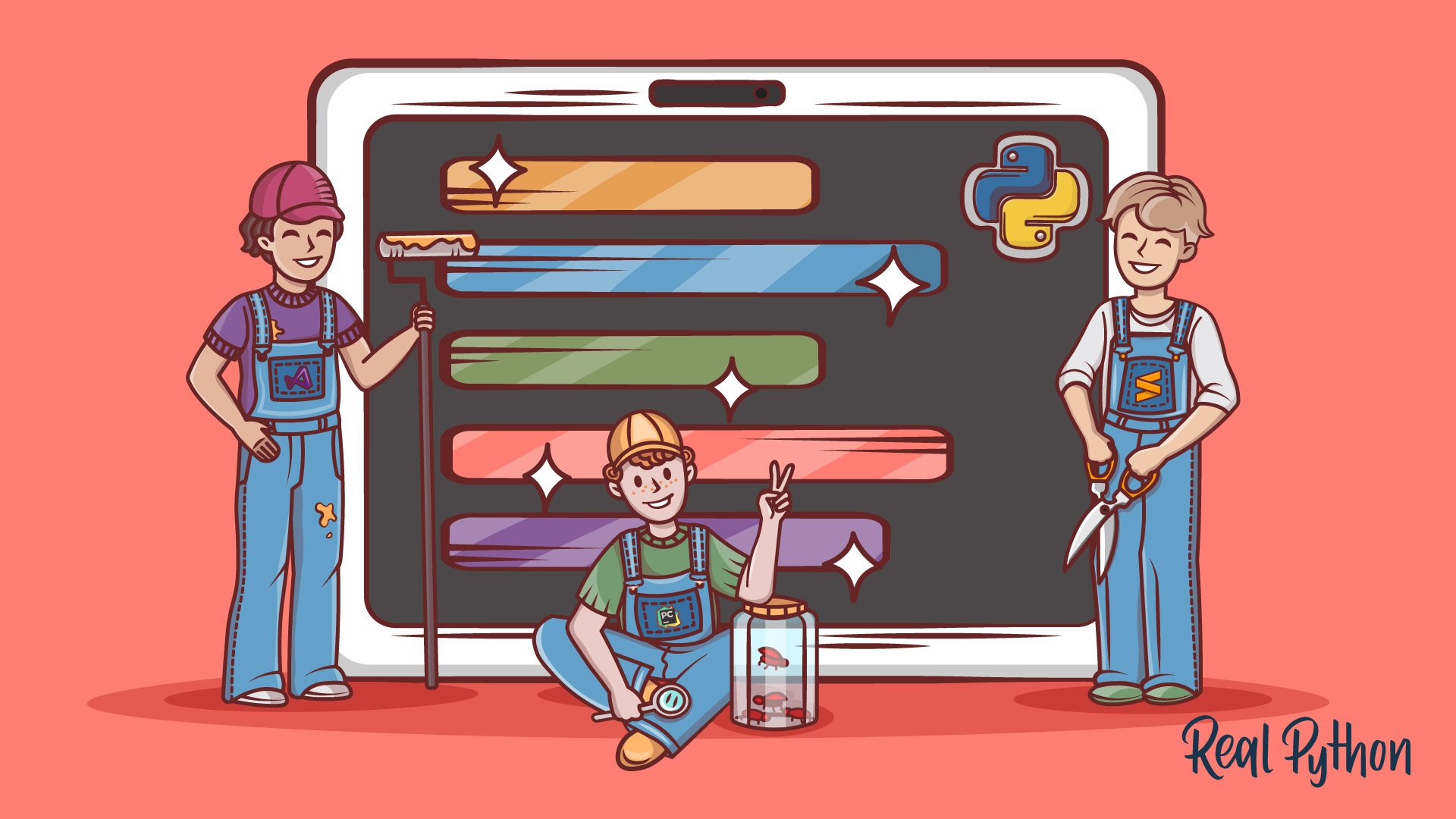
Course
Finding the Perfect Python Code Editor
Find your perfect Python development setup with this review of Python IDEs and code editors. Writing Python using IDLE or the Python REPL is great for simple things, but not ideal for larger programming projects. With this course you'll get an overview of the most common Python coding environments to help you make an informed decision.

Course
Python Development in Visual Studio Code (Setup Guide)
Learn how to set up Visual Studio Code for Python development. By following examples, you'll cover everything from installing and configuring VSCode, to running tests and debugging Python apps.
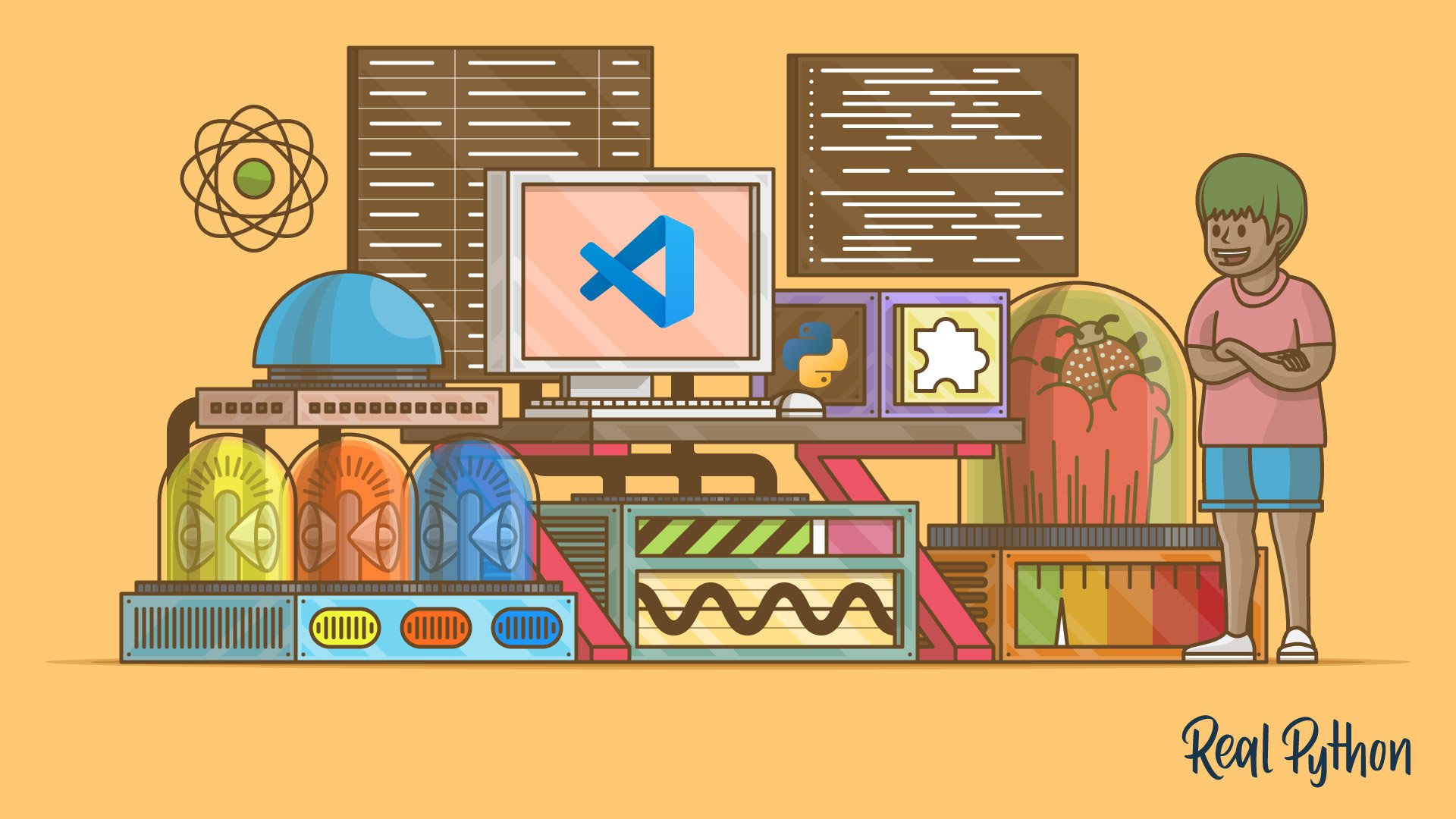
Tutorial
Advanced Visual Studio Code for Python Developers
Learn how you can configure, extend, and optimize Visual Studio Code for a more effective and productive Python development environment. By digging into this customizable code editor and IDE, you'll put yourself on track to be a VS Code power user.

Tutorial
PyCharm for Productive Python Development (Guide)
Learn how you can use PyCharm to be a more productive Python developer. PyCharm makes debugging and visualization easy so you can focus on business logic and just get the job done.

Course
Working With Python Virtual Environments
This course demonstrates how Python's virtual environments work as a "sandbox" and you get a quick walkthrough on how to set up a new environment (or virtualenv, as they're called for short) and how to install third-party packages into it using the pip command.

Interactive Quiz
Python Virtual Environments: A Primer
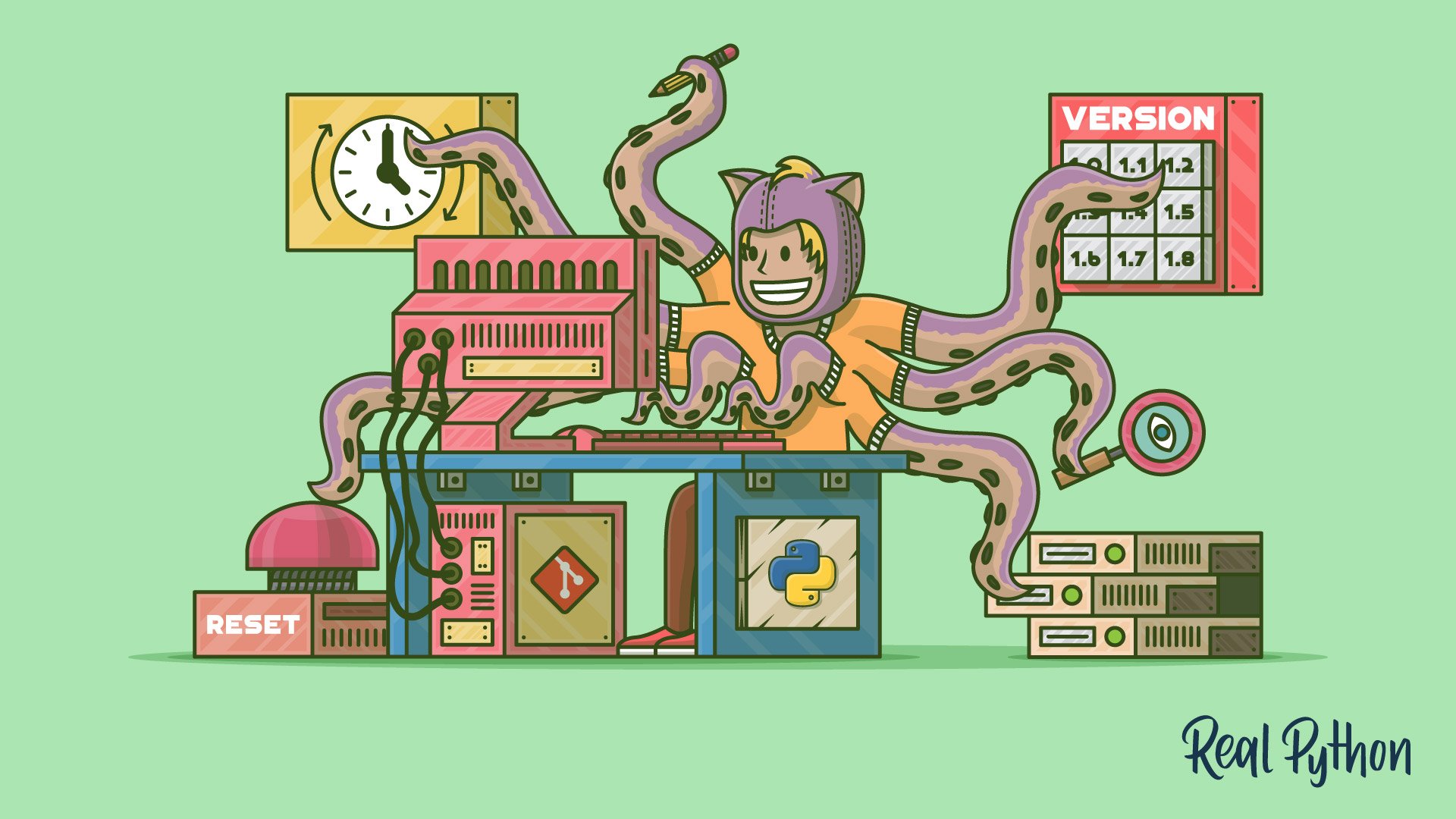
Course
Introduction to Git and GitHub for Python
What is Git, what is GitHub, and what's the difference? Learn the basics of Git and GitHub from the perspective of a Pythonista in this step-by-step video course.

Course
Start Managing Multiple Python Versions With pyenv
Learn how to install multiple Python versions and switch between them with ease, including project-specific virtual environments, with pyenv.

Interactive Quiz
Managing Multiple Python Versions With pyenv
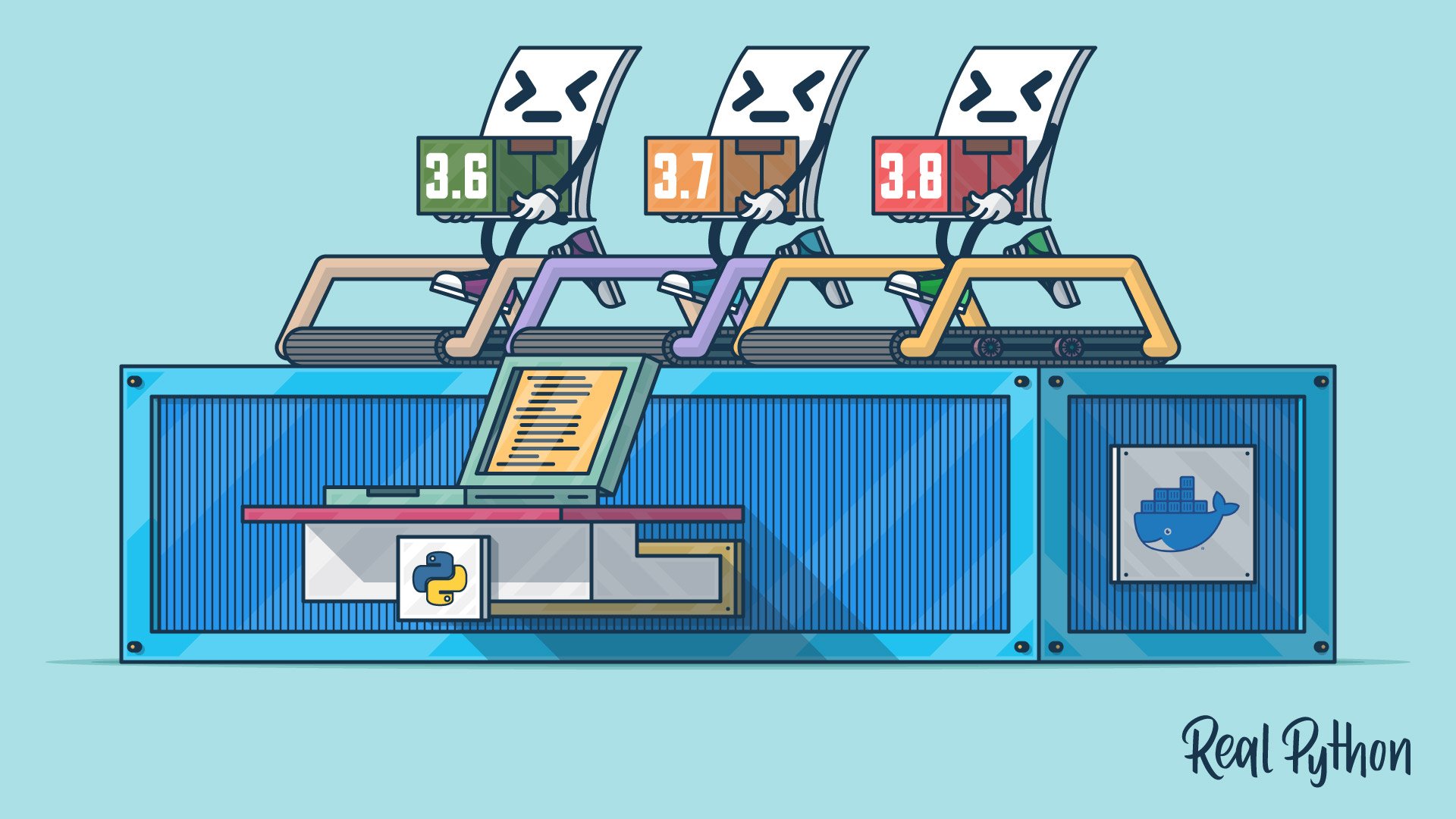
Tutorial
Run Python Versions in Docker: How to Try the Latest Python Release
Learn how to run different Python versions in Docker. By following the examples, you'll see how you can play with the latest development version of Python, and how to use Dockerfiles to set up Python environments and package your own scripts.

Tutorial
How Can You Install a Pre-Release Version of Python?
If you want to have a peek at what's coming in the next stable version of Python, then you can install a pre-release version. In this tutorial, you'll learn how to access the latest Python versions and help test them.
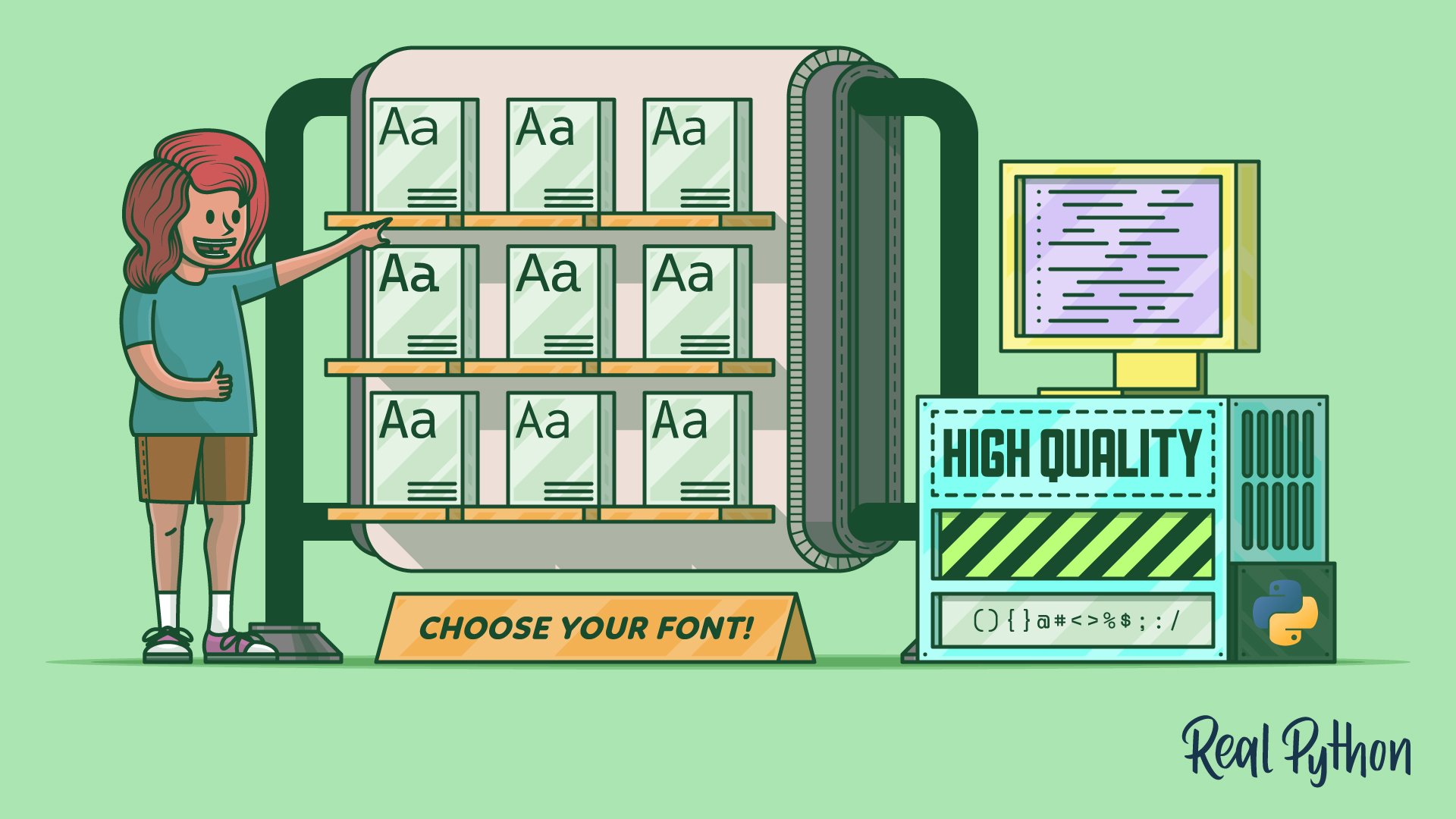
Tutorial
Choosing the Best Coding Font for Programming
The font that you use is an important piece in your tool kit as a programmer. After all, you look at your programming font the whole time when writing code. In this tutorial, you'll find your perfect font for coding.
Got feedback on this learning path?
Looking for real-time conversation? Visit the Real Python Community Chat or join the next “Office Hours” Live Q&A Session. Happy Pythoning!